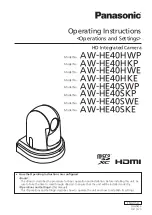
www.enersys.com Publication No. US-FL-IOM-002 January 2007 Page
31
9.2
Hydrometer Readings - Specific Gravity
Specific gravity is a measurement of the density or weight of the electrolyte compared with
water (1.000). Specific gravity decreases on discharge and rises again on charge as a result of
the electrochemical reaction within the cell.
Because both the cell temperature and the electrolyte level affect the specific gravity reading,
they should be recorded at the same time as the gravity reading.
Do not take gravity readings immediately after adding water to the cells.
Complete mixing
usually takes several days for antimony cells and several weeks for calcium cells. Because of
the low charging currents in float service, especially with lead calcium cells, mixing of the
electrolyte is a very slow process.
All calcium cells, except “C” size cells, are provided with an electrolyte withdrawal tube, located
in the corner of the cell cover adjacent to the positive post(s). Other corner holes are sealed off
with plugs. Keep these plugs tightly closed and do not open them to withdraw acid sample.
Antimony cells are not provided with an electrolyte withdrawal tube. To take a specific gravity
reading, use the flame arrestor's center funnel. Access this funnel by removing the dust cap of
the flame arrestor.
(All the corner holes are sealed with plugs. Keep these plugs tightly
closed and do NOT open them to withdraw acid sample.)
Using the long-stemmed hydrometer (Cat. 81332) will result in sampling of the electrolyte at a
point one-third down from the top of the plate. The long stem of the hydrometer must be cut to
7 3/4 inches (200 mm) for "E" cells; to 9 inches (230 mm) for "D" and "F" cells; or 12 inches (300
mm) for "G" cells. At this level the electrolyte gives a reliable indication of the state of charge of
a cell.
When taking a hydrometer reading, insert the full length of the hydrometer stem into the
withdrawal tube hole, so that the base of the stem rests on top of the withdrawal tube.
9.3
Full-Charge Specific Gravity
With the cells fully charged, the electrolyte level at the midpoint between level lines and the cells
on float for a minimum of 72 hours, the specific gravity of the electrolyte at
77
o
F
(
25
o
C)
should
read between the limits on the cell nameplate.
These gravity limits are adjusted at the factory and will not require any further adjusting during
the life of the battery unless electrolyte is actually lost from a cell. If electrolyte should
accidentally be lost, it should be replaced with electrolyte of the same specific gravity as that in
the adjacent cells.
When taking hydrometer readings, hold the hydrometer stem in an upright position so that the
hydrometer floats freely and does not touch at either the top or the sides (See Figure 9.1).
Содержание PowerSafe Data Safe
Страница 8: ......
















































